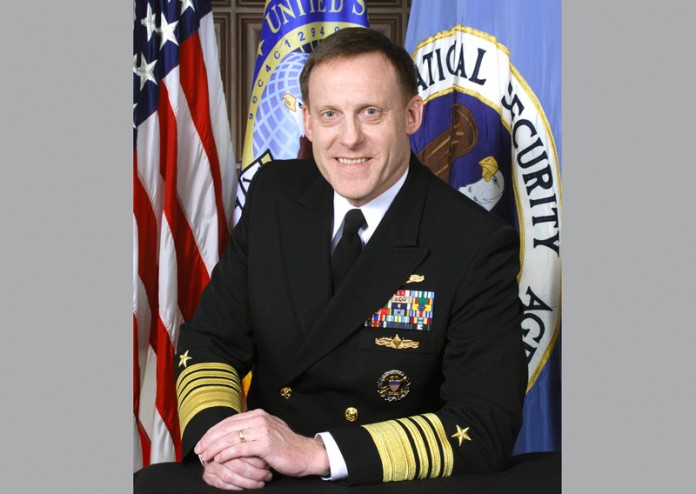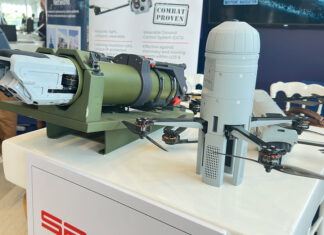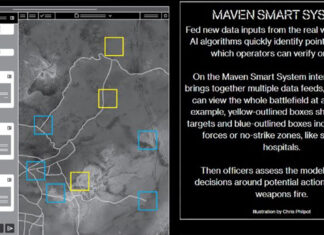
“There should be [no] doubt in anybody’s mind that the cyber challenges we’re talking about are not theoretical. This is something real that is impacting our nation and those of our allies and friends every day,” Navy Admiral Michael S. Rogers said, adding that such incidents are costing the government and industry hundreds of billions of dollars, leading to a reduced sense of security and potentially to “some truly significant, almost catastrophic failures if we don’t take action,” admiral Rogers added.
Navy Admiral Michael S. Rogers, the commander of the U.S. Cyber Command, Director of the National Security Agency and Chief of the Central Security Service briefed members of the House Permanent Select Committee on Intelligence on the Committee about advanced cybersecurity threats that the US is facing.
“This is something real that is impacting our nation and those of our allies and friends every day”
In recent weeks, cyber-related incidents have struck the White House , the State Department , the U.S. Postal Service and the National Oceanic and Atmospheric Administration . The Defense Department , the U.S. Sentencing Commission and the U.S. Treasury also have had cyber intrusions.
Sophisticated malware has been found on industrial control systems used to operate U.S. critical infrastructure, and other major intrusions have been reported by J.P. Morgan Chase, Target, Neiman Marcus, Michaels, Yahoo! Mail, AT&T, Google, Apple and many more companies.
“We have … observed intrusions into industrial control systems,” Rogers said. “What concerns us is that … capability can be used by nation-states, groups or individuals to take down” the capability of the control systems.”
And “we clearly are seeing instances where nation-states, groups and individuals are aggressively looking to acquire that capability,” he added.
Rogers said his team thinks they’re seeing reconnaissance by many actors to ensure they understand U.S. systems in advance of exploiting vulnerabilities in the control systems.
“We see them attempting to steal information on how our systems are configured, the specific schematics of most of our control systems down to the engineering level of detail so they [see] … the vulnerabilities, how they are constructed [and] how [to] get in and defeat them,” the admiral said.
“Those control systems are fundamental to how we work most of our infrastructure across this nation,” Rogers added, “and it’s not just the United States — it’s on a global basis.”
Growth Areas of Vulnerability
When he’s asked about coming trends, Rogers said, industry control systems and supervisory control and data acquisition systems, called SCADA systems, come to mind as “big growth areas of vulnerability and action that we’re going to see in the coming 12 months.”
“It’s among the things that concern me the most,” he added, “because this will be truly destructive if someone decides that’s what they want to do.”
What it means, he said, is that malware is on some of those systems and attackers may already have the capability to flip a switch and disrupt the activity the switch controls.
“I’m watching nation-states attempt to obscure their fingerprints. And one way to do that is to use surrogate groups to attempt to execute these things”
“Once you’re into the system … it enables you to do things like, if I want to tell power turbines to go offline and stop generating power, you can do that,” he explained. “If I want to segment the transmission system so you couldn’t distribute the power coming out of power stations, this would enable you to do that.”
Criminals as Surrogates for Nation-states
The next trend Rogers sees near-term is for some criminal actors now stealing information designed to generate revenue to begin acting as surrogates for other groups or nations.
“I’m watching nation-states attempt to obscure, if you will, their fingerprints,” he said. “And one way to do that is to use surrogate groups to attempt to execute these things for you.”
That’s one reason criminal actors are starting to use tools that only nation-states historically have used, the admiral said.
“Now you’re starting to see criminal gangs in some instances using those tools,” he added, “which suggests to us that increasingly in some scenarios we’re going to see more linkages between the nation-state and some of these groups. That’s a troubling development for us.”
Such activities across the cyberscape, he said, make it difficult for private-sector companies to try to defend themselves against rapidly changing threats.
A Legal Framework for Cyber Sharing
But before Cybercom can help commercial companies deal with cyber criminals and adversarial nation-states, Rogers said the command needs a legal framework “that enables us to rapidly share information, machine-to-machine and at machine speed, between the private sector and the government.”
The framework, he added, must be fashioned in a way that provides liability protection for the corporate sector and addresses valid concerns about privacy and civil liberties.
Such legislation has passed in the House but not in the Senate, and the Senate has created its own similar legislation that has not yet passed the full Senate.
Rogers says there are several ways Cybercom can share what it knows about malicious source code with the private sector so companies can protect their own networks, and assure Americans that NSA isn’t collecting or using their personal information while sharing information with private companies.
What the Private Sector Needs
With private-sector companies, Cybercom and NSA must publicly “sit down and define just what elements of information we want to pass to each other,” he said, specifying what the private sector needs and what the government needs, and also areas that neither wants to talk about.
“I’m not in that private-sector network, therefore I am counting on the private sector to share with us,” the admiral said.
What he thinks the government owes the private sector is this — Here are the specifics of the threats we think are coming at you. Here’s what it’s going to look like. Here’s the precursor kinds of activities we think you’re going to see before the actual attack. Here’s the composition of the malware we think you’re going to see. Here’s how we think you can defeat it.
“We have seen individuals, groups inside critical U.S. infrastructure. That suggests to us that this vulnerability is an area others want to exploit”
What Rogers says he’s interested in learning from the private sector is this — Tell me what you actually saw. Was the malware you detected written along the lines that we anticipated? Was it different and how was it different? When you responded to this, what worked for you and what didn’t? How did you configure your networks? What was effective? What can we share with others so the insights of one come to the aid of many?
“That’s the kind of back-and-forth we need with each other,” Rogers said, and legislation is the only thing that will make it happen.
Helping Defend Critical Infrastructure
Rogers says he tells his organization that he fully expects during his time as Cybercom commander to be tasked to help defend critical infrastructure in the United States because it is under attack by some foreign nation or some individual or group.
“I say that because we see multiple nation-states and in some cases individuals in groups that have the capability to engage in this behavior,” the admiral said, adding that the United States has seen this destructive behavior acted on and observed physical destruction within the corporate sector, although largely outside the nation’s borders.”
“We have seen individuals, groups inside critical U.S. infrastructure. That suggests to us that this vulnerability is an area others want to exploit,” the admiral said. “All of that leads me to believe it is only a matter of time when, not if, we are going to see something traumatic.”
Rogers says he’s “pretty comfortable” that there is broad agreement and good delineation within the federal government as to who has what responsibilities if Cybercom is called on during a major cyberattack in the United States.
“The challenge to me is we’ve got to … get down to the execution level of detail,” he said. “I come from a military culture [which] teaches us to take those broad concepts and agreements and then you train and you exercise. And you do it over and over. That’s what we’ve got to do next.”
Editor: Cheryl Pellerin, DoD News




















